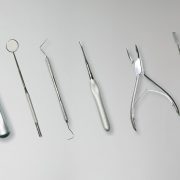In pediatric dentistry, managing hypomineralized permanent first molars (HPFM) is often challenging due to heightened sensitivity and increased susceptibility to caries. A new randomized controlled clinical trial offers valuable insights into the effectiveness of zirconia-reinforced glass ionomer (ZrGI) as a restorative material in such cases,comparing it head-to-head with glass-hybrid glass ionomer (GhGI) using the Atraumatic Restorative Treatment (ART) approach.
Conducted on 88 molars from children aged 7 to 10 years, the study assessed pain reduction, sensitivity improvement, and clinical success over a 12-month period. Teeth presenting with caries and variable degrees of hypersensitivity (MIH-TNI scores 2a, 2b, 4a, or 4b) were selectively excavated and restored either with Zirconomer® (ZrGI) or Equia Forte® (GhGI).
Pain and sensitivity were measured using the Visual Analogue Scale (VAS) at baseline, and then reassessed at 1 week, 3, 6, 9, and 12 months. Clinical success of the restorations was evaluated starting from the 3-month visit using established ART criteria.
Both materials showed comparable performance. After 12 months, no statistically significant difference was observed between the groups in terms of pain or sensitivity scores. Clinical success rates were nearly identical: ZrGI at 86.4% and GhGI at 84.1% (p = 0.765).
This equivalence in outcomes supports the use of ZrGI as a viable alternative to GhGI, offering similar benefits in pain relief, sensitivity control, and restoration longevity. Given ZrGI’s enhanced physical properties from zirconia reinforcement, it may serve as a reliable interim restoration in hypomineralized molars—and potentially broader applications in pediatric restorative care.
Source: Springer




















Comments